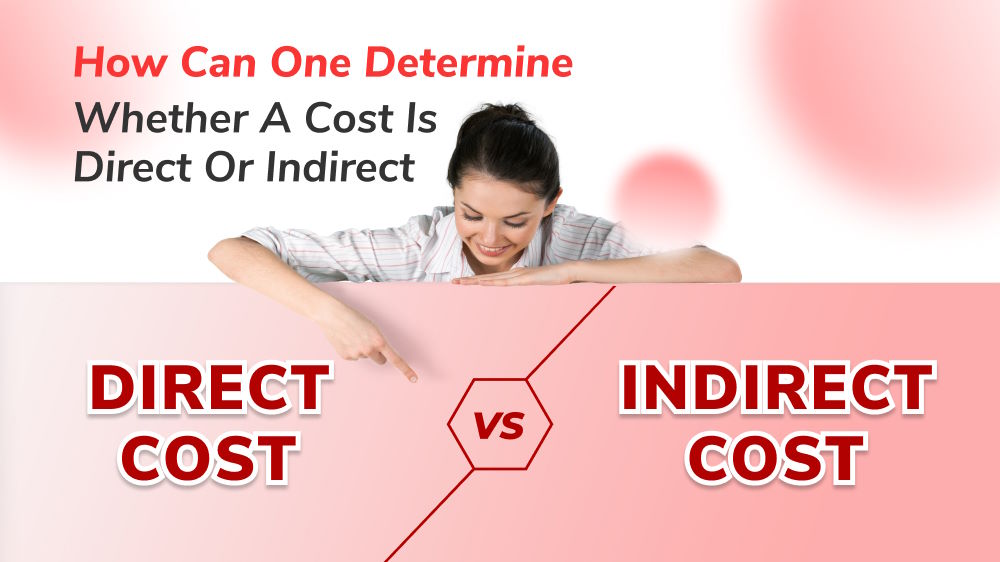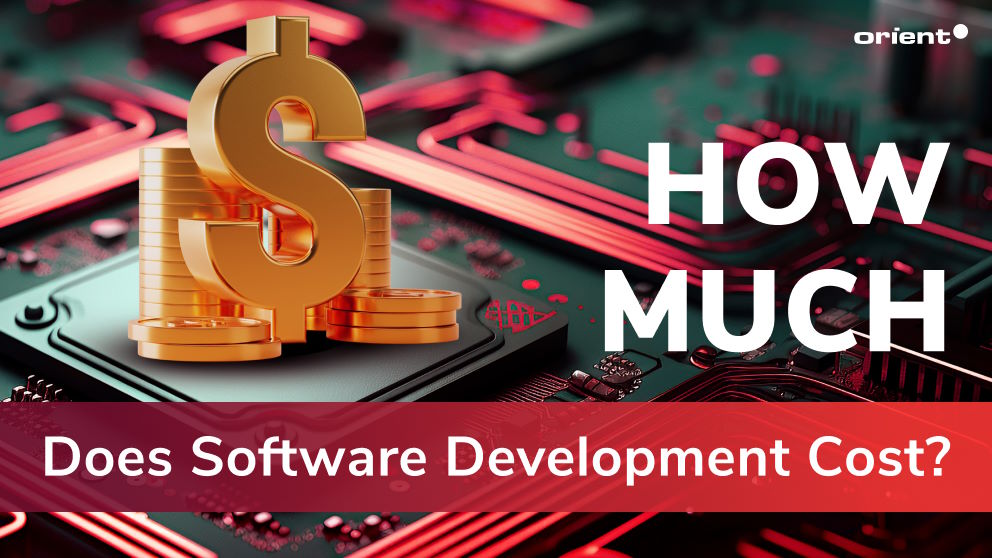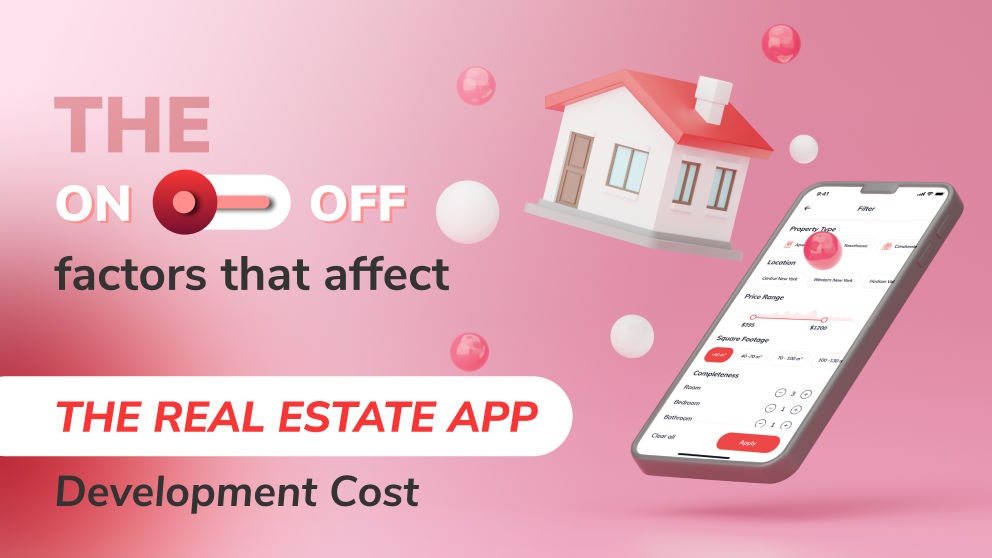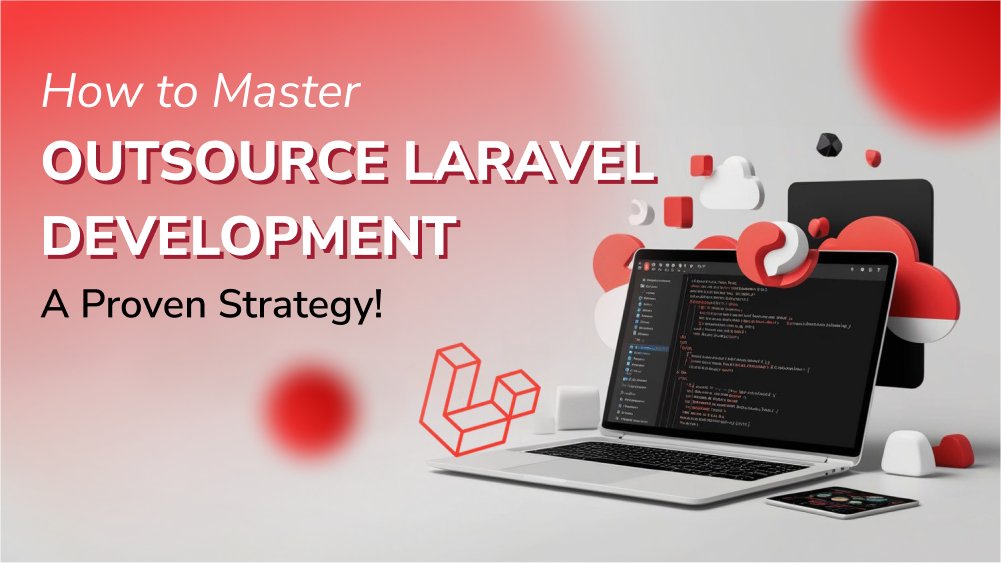
Direct Cost Vs. Indirect Cost: How Can One Determine Whether a Cost Is Direct or Indirect
Understand direct vs. indirect costs to safeguard your business's competitive edge. Identify the differences now to stay ahead.
It is undeniable that off-the-shelf software development products are convenient and effective solutions for basic needs. However, with the recognition of the emphasis on user-centric, existing software, which is designed to be applicable to a broad range of businesses or industries, is gradually no longer suitable in the current context. Embarking on the journey of building custom software solutions now becomes the most optimal choice for creating a competitive advantage and providing greater control to product owners.
However, the fact that up to 45% of software projects exceed budget during deployment leaves businesses with great anxiety. How to build good software with the best balance between price and functionality? You probably ask this question at every software development meeting.
Developing software is a major investment directly contributing to your business’s bottom line. Labor and infrastructure expenses are just some of the unresisting factors that affect the total costs of software development. Not to mention various hidden costs that organizations may not initially anticipate. Only by considering all potential factors do businesses accurately identify the tailor-made software development cost. This article may give you some helpful clues.

Cost factors are exactly the most appropriate answer to the question of how to estimate software development cost. There are several components comprising the overall costs of your software development project. A rough estimate would set you back between $3,000 to $250,000. The wide difference comes from various factors associated with business requirements and capacity, such as development team, set of features, development time, etc.
Listing out the more cost factors, the more likely you can avoid budgeting issues and calculate the most accurate cost to develop. Check out the software development cost breakdown below to discover all the possibilities.
The project size refers to the scope and complexity of a particular enterprise software. It encompasses multiple factors that clarify the work extent and magnitude involved in completing the project. Roughly speaking, the size of a project takes into account the size of the software and the size of the user base. The size of the software is measured by the number of screens or pages it has, and the size of the user base is the number of end-users it is expected to serve.
There are some common classifications of the project size, including:
The table below provides a quick rundown of the project scope, price range, and time estimates for four main types of software solutions scaled to their sizes. The simplest solution is software modification; the most complex is developing new software.
| Small | Medium | Large | Enterprise | |
|---|---|---|---|---|
| Software Modification | $3k-$10k 1-2 weeks | $20k-$50k 2-6 weeks | $80k-$150k 2-6 months | $100,000+ 4+ months |
| Web Development | $10k-$30k 3-6 weeks | $20k-$60k 4-8 weeks | $60k-$150k 6-18 months | $80,000+ 3-6+ months |
| Software Integration | $15k-$40k 2-6 weeks | $50k-$80k 2-6 months | $70k-$100k 6-12 months | $80,000+ 6+ months |
| New Software | $25k-$60k 4-8 weeks | $50k-$100k 3-8 months | $100k-$250k 6-18 months | $125,000+ 8+ months |
Sourced from SphereGen..
The choice of necessary features and functionalities appearing on a custom application plays an important role in deciding the software development price. The more complex or extensive the needed features are, the higher the cost is likely to be. However, note that this is not entirely true in all cases. It is possible for a software product with only one complex feature to require a larger investment than a product with several simple features. The feature’s complexity is the critical element that goes beyond its simplicity or number when considering development costs.
See the table below for a cost and time breakdown of some common features.
| Feature | Approximate Cost | Average Time |
|---|---|---|
| Login/Registration | $1100 - $1700 | 20 hours+ |
| Payment options and integrations | $2500 - $5000 | 50 hours+ |
| Navigation | $250 - $500 | 10 hours+ |
| Offline mode | $1000 - $2000 | 40 hours + |
| Media content | From $1000 | 20 hours+ |
| Customization | $1500 | 20 hours+ |
| Chat messaging | $2000 - $4000 | 80 hours + |
| Data encryption | $650+ | 16 hours+ |
| Audio or video streaming | $2300+ | 56 hours + |
| Multi-language support | $350 - $750 | 15 hours |
Sourced from DoIT Software.
Based on the nature and complexity differences, types of enterprise software can indeed have a significant impact on the overall custom software development cost. For example, the cost of creating a CMS is generally considered to be affordable compared to a CRM due to the complexity distinction. While CMS allows businesses to simplify the development process by using an off-the-shelf solution like WordPress, CRM with deep involvement in user experience requires many unique customizations to cater to the customer base’s certain needs and operational processes, potentially leading to higher expenses.
If your business needs a custom solution, the following table can give you an overview of the cost estimates. Note that the costs listed are for a basic package with the essential features only. More custom-built features will amount to a higher total.
| Name | Purpose | Basic Cost |
|---|---|---|
| Content management system (CMS) | Create & update content | $20,000 - $50,000 |
| Customer Relationship Management System (CRM) | Gain & keep track of customers Manage vendors and partners | $100,000 - $600,000+ |
| Enterprise Resource Planning Systems (ERP) | Manage daily operations | $100,000 - $500,000 |
| eCommerce Solutions | Promote and sell products | $20,000 - $70,000 |
| Supply Chain Management Solution (SCM) | Manage supply chains | $100,000 - $300,000 |
| SaaS products | Cloud-based, subscription-funded solutions | $25,000 - $100,000+ |
Sourced from DoIT Software.
Which platform do you want your app to work on? iOS, Android, or the web? If you’re starting web application development on platforms like Windows, macOS, or Linux, there is nothing to worry about since most web development languages like JavaScript or Python are platform-independent. However, things are different with mobile app development. With two platform options, including native and cross-platform, developers are completely proactive in distributing their financial strategy.
Although cross-platform development is more time-saving and cost-effective when allowing for code reusability across multiple platforms, it encounters many limitations in performance and user experience due to the distinct needs of each platform. On the other hand, native app development requires building separate codebases for each platform, which may be more time-consuming and expensive than cross-platform ones. In exchange for all those shortcomings, native apps provide a complete software solution, creating satisfied user experiences throughout the usage process.
| Native App | Cross-platform App |
|---|---|
| 1app for 1 platform. User base limited to chosen platform. | 1 app for 2 platforms simultaneously. Maximized user base. |
| More expensive. Need to write 2 codebases for 2 platforms. | Cheaper. Write 1 source codebase for both platforms. |
| Better functionality: - Faster - Better performance - Better UX - more user friendly | Functionality and design may suffer |

Do you want to engage your users to keep using the software because they enjoy its aesthetics and ease of use? UI/UX design can be pretty pricey, but it is a critical element in retaining a loyal user base. An app with an effective UI/UX design is user-friendly. This design incorporates everything from the colors, icons, fonts, buttons, audiovisuals, and navigation, making the software a pleasant and straightforward experience for your target audience. The costs of custom UI/UX design depend on the complexity of the custom artwork, animations, testing, and redesign.
The back-end infrastructure handles many background processes that enable the app to function smoothly. Every interaction with the app needs to be processed, from logging in, updating information, and modifying the settings to more specific functions such as uploading images or searching for a location on a map. Furthermore, data protection has become increasingly crucial for businesses and users, so developers need hours to ensure data privacy compliance in every stage of development.
A more extensive app also requires integration with third-party services and systems, so purchasing APIs or having custom-built ones would strengthen the functionality of your software.
How do you want to work with the developers? Do you want their exclusive expertise or just their service on a less intensive scale? There are three hiring models, including in-house, freelancing, and outsourcing.
An in-house team can guarantee the highest service quality but also demand the most time and money to hire, train, and invest in resources. On the opposite side of the scale is the concept of freelancing. Freelancing is the most affordable option, but the quality of work may suffer due to lack of motivation, unreliability, and poor communication.
Outsourcing provides the best of both worlds. It costs less than building an in-house team from scratch while allowing access to quality-assured developers. There are three outsourcing models:
Depending on the project’s scope, a development team can have three to twelve or more people. The more developers are involved, the faster the project will be completed. However, the number of people hired will obviously have a profound effect on the average cost of your software development. Basically, a well-form developer team often consists of four key roles, including a project manager, developers, a QA tester, and a UI/UX designer. Medium to large projects need additional roles, such as business analysts and database engineers.
If you choose to use software development services from outsourcing companies, note that their developer location also has a strong influence on the overall project cost. Based on average personal income and standard of living, developers based in the USA and Western Europe charge much higher hourly rates than those from other places. That is the reason why today’s customers often prefer talent pools from Asian countries the most. Vietnam, for example, with a series of notable benefits, is a popular destination for organizations wishing to save money while still ensuring project outcomes.
Here is a table of the average hourly rates worldwide, considering the developers’ work experiences.
| Region | Hourly rate Junior | Hourly rate Mid-level | Hourly rate Senior |
|---|---|---|---|
| North America | $80-$100 | $120-$127 | $140-$150 |
| Western Europe | $35-$45 | $45-$55 | $50-$80 |
| Australia | $70-$150 | ||
| Eastern Europe | $25-$35 | $30-$40 | $40-$50 |
| South America | $25-$35 | $35-$40 | $35-$50 |
| Asia | $20-$30 | $25-$35 | $35-$45 |
It would help if you also considered time zones, cultural differences, and language barriers that can influence how you communicate with the outsourcing team, which may ultimately affect the total development time.
Issues surrounding security, such as licensing agreements and regulatory compliances, are some of the most important software development cost factors that may cause businesses many unexpected hidden expenses. Security is always the top concern for businesses developing software applications, including banking apps. Investing in encryption techniques, secure coding practices, and regular security audits to limit cyber security risks and vulnerabilities obviously leads to higher development costs.
Depending on the project’s requirements, some software requires developers to acquire licenses for third-party libraries, frameworks, or tools that are used in the development process. Failure to comply with licensing agreements or other security incidents like data highlights could lead to legal consequences and potentially costly penalties related to certain regulations and standards, such as DPA or HIPAA.
After the initial development phase, ongoing maintenance and upkeep costs can arise to ensure the software’s smooth operation, stability, and longevity. This process not only mandates dedicated resources, including tools and infrastructure, but also requires additional specialized personnel. These resources come at a cost, whether it involves hiring in-house staff or outsourcing IT support services. The cost used for maintenance and support can vary depending on the complexity of the system, the size of the user base, and the level of support required. As the software product evolves and matures, this cost type can also grow accordingly to maintain performance and user satisfaction.

The budget for your software can be reduced even further if you know how to apply some simple tips throughout the development process. Maximize your software development cost estimation while still delivering a high-quality product that meets business objectives and user needs with these solutions.
Investing in brand-new software or modifying an existing one is a significant expense for any business, and the process can be overwhelming with so many factors to consider. It is wise to start this process with the discovery phase to lay out a clear set of goals and scope for your software. Scoping and setting goals enable you to know clearly what your software needs so that you can give the development team succinct instructions based on your requirements.
Ultimately, the total price comes down to the number of people, hours, and the complexity of the technology involved. Contact Orient Software and use our extensive expertise and affordable pricing to create a custom solution with the best balance between quality and cost.
Understand direct vs. indirect costs to safeguard your business's competitive edge. Identify the differences now to stay ahead.
How much does Android app development cost? Watch out for these factors, including visible and hidden ones, to maximize your financial strategy.
Multiple factors can cause your real estate app development cost to rise or fall. Keeping them in mind is a must to control and optimize the budget.
Explore why Flutter is popular, the key skills needed, and the best places to hire Flutter developers. Get insights on hiring the best!
Curious about the best way to outsource Laravel development? Discover proven strategies to master it effectively in our latest guide!





